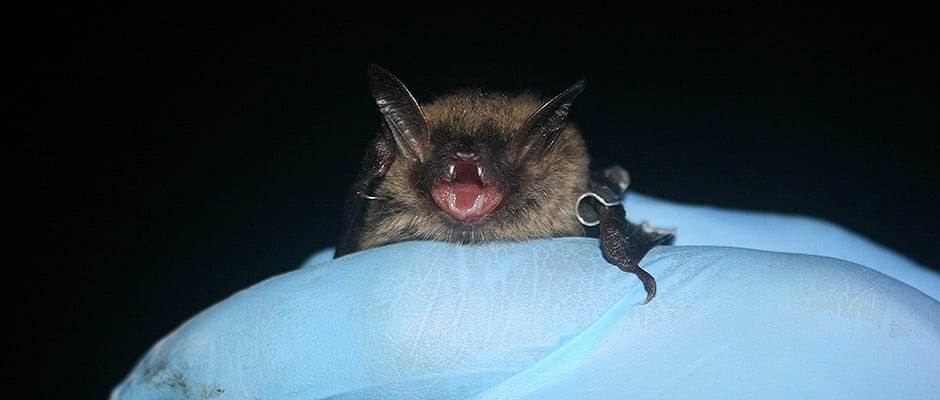Share this article
Northern Long-Eared Bat Listed As Threatened Species
The U.S. Fish and Wildlife Service (FWS) published final and interim rules regarding the status determination of the northern long-eared bat (Myotis septentrionalis) on April 1st.
The final rule lists the northern long-eared bat as a threatened species under the Endangered Species Act (ESA). The interim rule, which is open for comment through July 1st, outlines protective regulatory measures for the species. Northern long-eared bats were originally proposed for listing as endangered in October 2013 with a 60-day comment period. FWS ultimately extended and re-opened the comment period multiple time before re-issuing a proposal for listing as threatened in January 2015.
The species is susceptible to white nose syndrome, a deadly fungal disease that is present in 28 of the 37 states that make up the northern long-eared bat’s range. Populations in eastern states have declined more than 90% since the disease was first detected in upstate New York in 2006.
Sections of the ESA allow the Secretary of the Interior to prohibit intentional or unintentional harassment, harm, or killing, collectively referred to as “take,” of threatened or endangered species.
In general, the interim rule prohibits purposeful take of the species, except when authorized by a permit when removing a bat from human structures. Additionally, the interim rule prohibits unintentional take caused by certain activities based on the occurrence of white nose syndrome. Incidental or unintentional take from otherwise lawful activity is not prohibited in areas that aren’t affected by white nose syndrome.
There are more limitations on unintentional take in areas known to be affected by white nose syndrome. However, incidental take that occurs from forest management practices is not prohibited as long as it protects known maternity roosts, which are trees occupied by female and juvenile bats, or hibernacula, areas where bats hibernate.
The rules have faced criticism from multiple groups. Lawmakers, including Congressman Rob Bishop (R-Utah), Chairman of the House Natural Resources Committee, and Senator James Inhofe (R-OK), Chairman of the Senate Environment and Public Works Committee, had previously pressed the FWS to delay the listing. Those lawmakers now claim the ruling is a “distraction” from the real threat to bat populations – white nose syndrome – and are critical of federal action regarding the species.
Various environmental groups are also critical of the interim rule due to its provisions for industry activities that may impact bat populations. The Center for Biological Diversity filed a lawsuit alleging that the interim rule was issued without broad biological assessments required by the National Environmental Policy Act.
View the determination and instructions to comment on the interim rule in the Federal Register.
Sources: Environment & Energy Daily (March 18, 2015); Federal Register (April 1, 2015); Federal Register (October 2, 2013); Greenwire (April 3, 2015); Greenwire (April 1, 2015)
Header Image: Image Credit: Keith Shannon, USFWS








